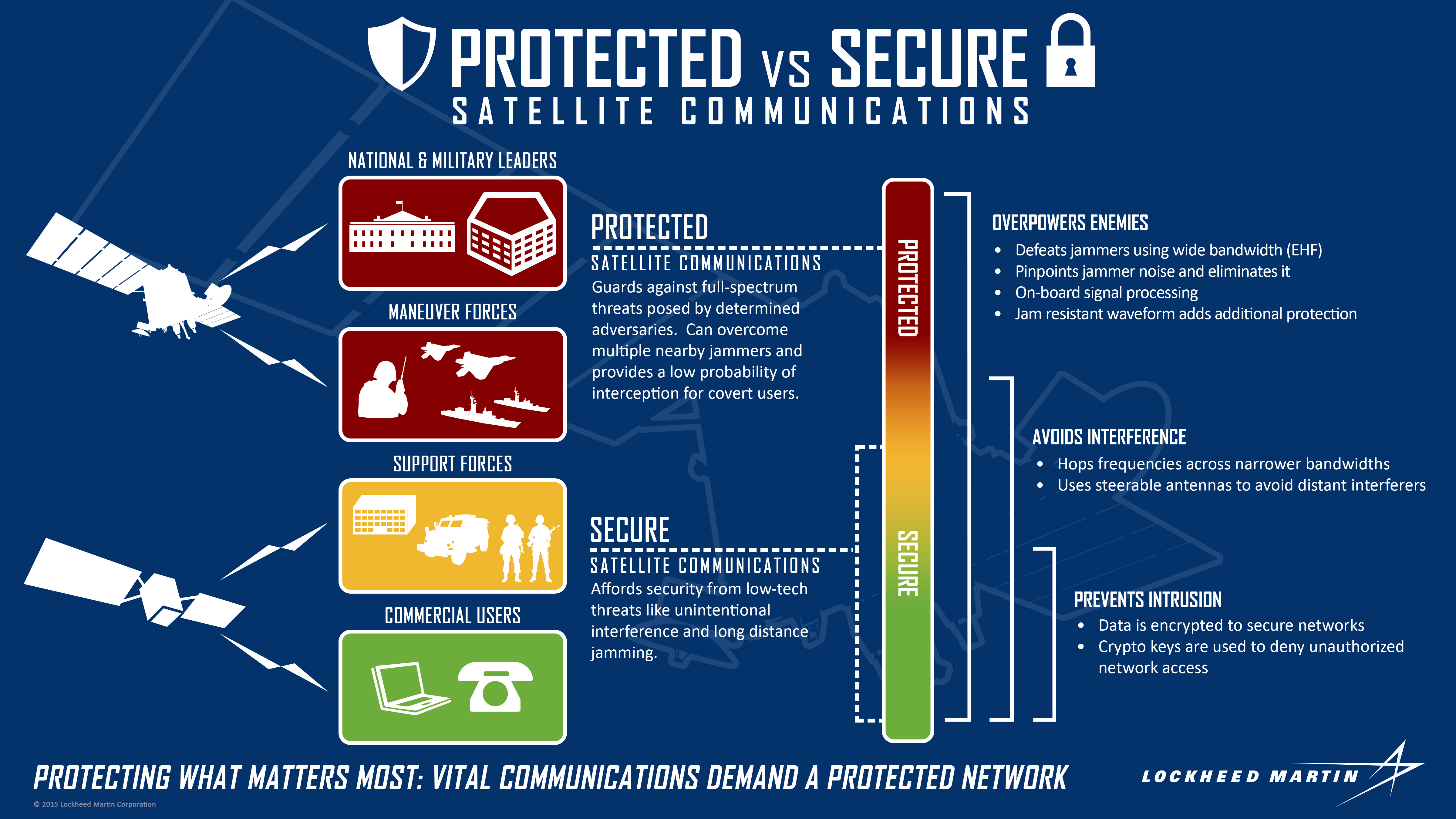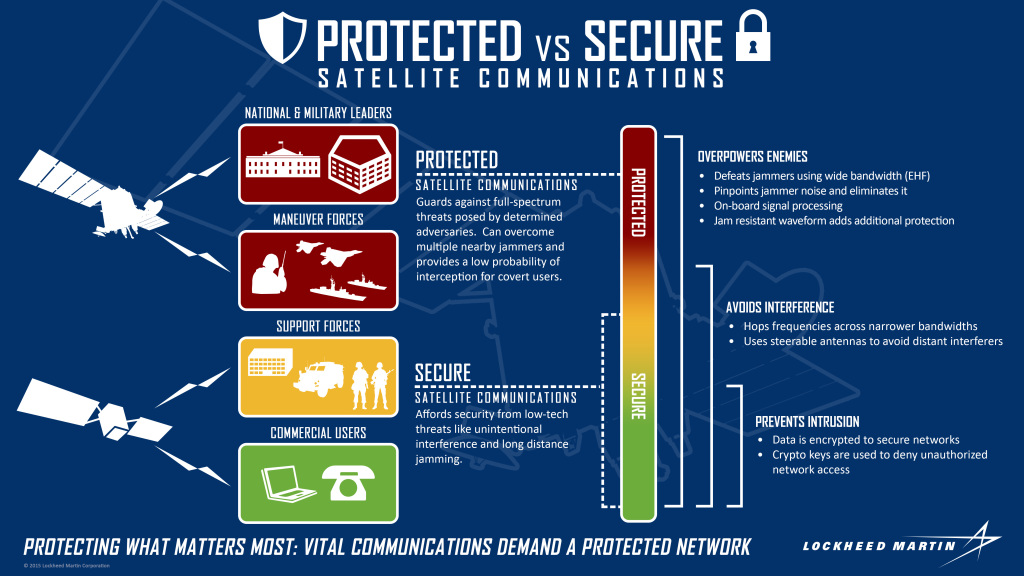One of the world’s most impenetrable satellite communications systems, built by Lockheed Martin (NYSE: LMT) to serve the U.S., Canada, the Netherlands and the U.K., is now live. Those nations now have a modern, operational protected network to connect their militaries when responding to global crises.
All four international partners are currently connected to the Advanced Extremely High Frequency (AEHF) satellite network, which provides protected communications from the Oval Office to the front lines. This phase, called initial operational capability, means the baseline capabilities have been met and that all operators with access can begin using the system for routine sensitive communication and critical operations.
“When a commander issues orders, they need to know their troops will get the information quickly and without fear of interruption or interception,” said Mark C. Calassa, vice president of Protected Communication Systems and AEHF program manager for Lockheed Martin.
“Compared to anything else on orbit, AEHF gives an unmatched level of protection and has five times the speed of legacy protected communication systems. With AEHF reaching IOC, the system’s international partners can more quickly and safely command some of the world’s most capable militaries to address global instability as it arises.”
AEHF provides a necessary, assured communications link for national leaders and military commanders transmitting sensitive information in contested areas. While there are many secure satellite communication systems serving both the civil and military sectors, AEHF is the only current system protected against the full spectrum of threats.
A constellation of nuclear-hardened communications satellites forms the AEHF protected network to stave off high-tech jammers, eavesdropping and cyberattacks. On-board signal processing and satellite-to-satellite crosslinks further insulate communications from vulnerability by eliminating the need for ground relay stations.
The system’s high data transfer rates can securely send images, video and other mission data to compatible aircraft, naval vessels and maneuver forces during special operations, anti-piracy missions and humanitarian relief efforts. AEHF’s gain in speed over its predecessor, Milstar, can also provide high-quality, real-time information like battlefield maps and targeting data for tactical operations.
Achieving initial operational capability followed a six-month evaluation cycle conducted by the U.S. Air Force where AEHF was tested in simulated scenarios like harrowing battlefield environments and cyberattacks. Lockheed Martin is contracted for six AEHF satellites; three are performing on orbit and the remaining three are in production at Lockheed Martin in Sunnyvale.


